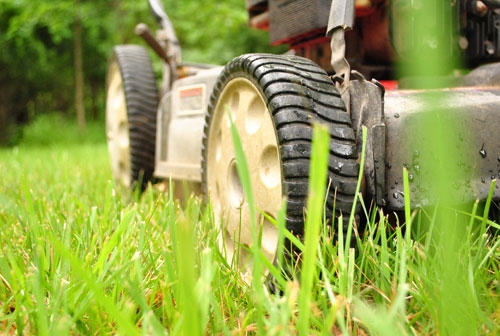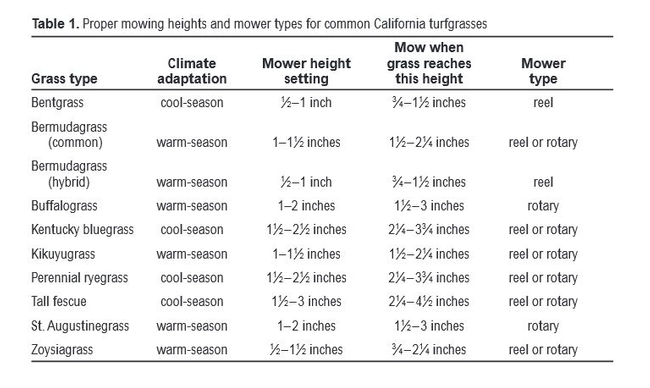The buzz of lawnmowers has become a familiar sound at the start of this spring. If your lawn is anything like mine, it's growing like crazy with this warm then wet weather we have had.
You might not think there is much to mowing your lawn but proper mowing, combined with other lawn maintenance practices, is critical for attractive, well-groomed lawns. One of the biggest mistakes people make is mowing too short. The following was taken from the UC Guide to Healthy Lawns.
Optimum cutting height is determined by the growth habit of a particular grass and its leaf texture (i.e., the length and width of leaves). A grass's survival depends on its producing adequate leaf surface for food production through photosynthesis. Mowing too low removes too much of the grass's food producing area. As the grass literally starves, the lawn thins and looks poor. Conversely, mowing too high can hurt the appearance or usefulness of the turfed area.
No single mowing height is best for all turfgrasses; mowers must be set differently for each grass. The table below shows the ranges for optimum mowing heights for California lawns. Within its optimum mowing height range, each grass species will be healthier and have a deeper root system the higher the grass is mowed. Also, within its recommended mowing range, a grass that is cut higher is more tolerant of drought, heat, traffic, shade, disease, and pests than one that is cut lower.
As a general guide, follow the one-third rule: mow often enough so that no more than one-third of the length of the grass blades is removed at any one time. For example, if you maintain a turf-type tall fescue lawn at 2 inches, mow it when the grass height reaches 3 inches. This may mean mowing tall fescue once a week during the spring and every two weeks during the summer. The table also gives the height at which you need to mow your lawn in order to best maintain your desired lawn height. A lower-mowed lawn will require more frequent mowing than that same lawn would if mowed higher.
ADDITIONAL MOWING TIPS
- Do not mow wet grass: it sticks to mower blades and clogs the mower.
- Change the direction of mowing periodically to prevent a “washboard” effect.
- Sharpen lawnmower blades regularly. Dull mowers leave a ragged appearance from crushed or uncut grass blades, and damaged grass may be more susceptible to disease.
- Do not drastically or suddenly change the cutting height. If the grass has become too tall, re-establish the recommended height by mowing more frequently for a while and gradually lowering the mowing height of successive cuttings, following the one-third rule.
- Since mowing stresses the grass, do not mow a lawn under drought or other climatic stress conditions. Grass that is suffering from lack of water should be watered and allowed to dry before being mowed.
- Mow a shady lawn slightly higher and less frequently than is normally recommended for that grass species. Shade reduces photosynthesis, and slightly higher mowing heights allow more leaf surface that compensates for the lower light levels
Stay tuned for more posts related to healthy lawns. If you have a gardening related question you can contact the UC Master Gardeners at 209-953-6112. More information can be found on our website.

